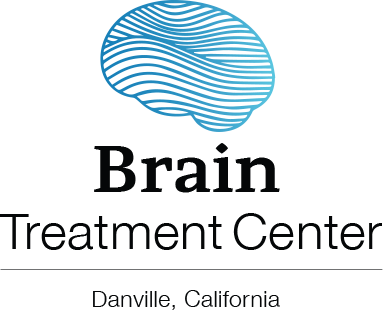NBC Sports: Nick Hardwick on “Taking Proactive Approach to Brain Health”
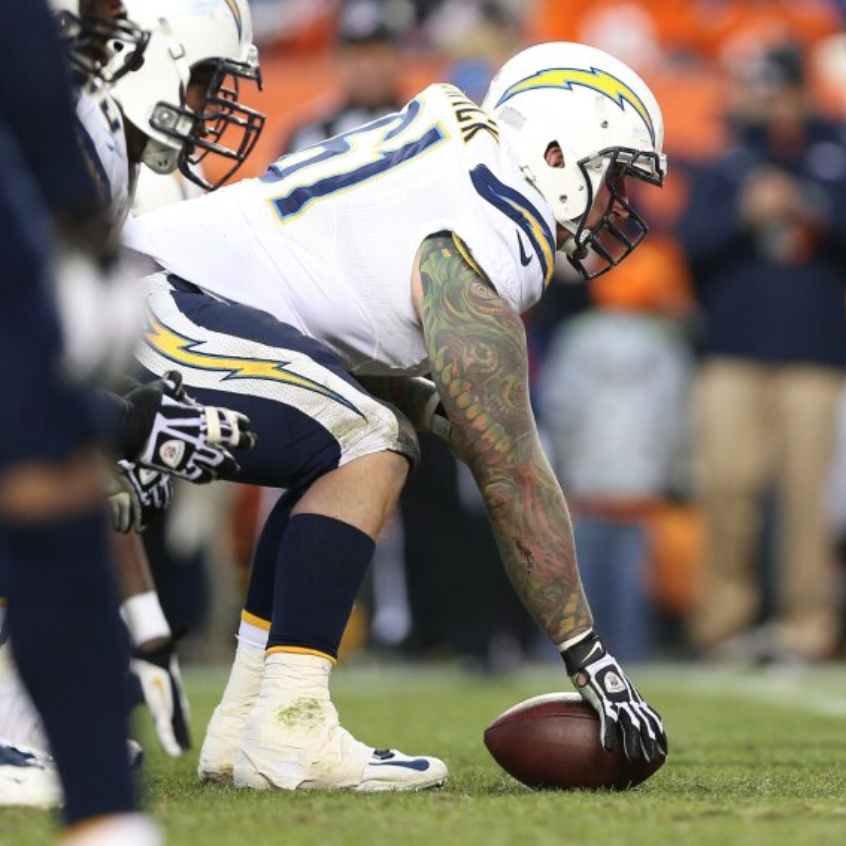
This has been anything but a typical NFL offseason for me. If you follow me on either Instagram or Twitter, you know I recently undertook an intensive, six-week brain treatment protocol at the Brain Treatment Center where I live in San Diego. It’s an affiliate of the USC Center for Neurorestoration, a progressive brain health clinic focusing on the intersection of physics and neuroscience.
I was turned on to the treatment from a great friend of mine, Pat Dossett, who spent a decade as a U.S. Navy SEAL. Upon his departure from the SEALs, he earned his MBA at the Wharton School of Business at the University of Pennsylvania, followed by several years working at Google. Pat is one of those people that when he offers advice, you take it, without thinking twice.
While he was by all accounts succeeding in his post-military transition, he still didn’t feel like he was quite operating at nearly as high a cognitive level as he could be. From my perspective, it felt very familiar in my post-football life.
Post-NFL Brain Health
Upon retiring in February 2015 after 11 seasons as an NFL center, all of them spent with the Chargers, I did my best to follow the counsel I received from coaches, the players union, and former teammates who had smoothly transitioned into the next phase of their post-playing lives.
For starters, I almost immediately lost a good chunk of my playing weight. It wasn’t necessary to carry 295 pounds on my 6-4 frame, because I no longer was tasked with routinely fighting some of the baddest humans on the planet for three hours-plus. I dropped the weight fast and got down as low as 208 pounds at one point, but my wife, Jayme, didn’t really favor that version. So I regained some muscle and currently weigh a very comfortable 230 pounds or so.
To keep busy and stay close to the game, I went to work almost immediately on the radio in San Diego, including at iHeart Radio, where I’ve hosted my own show since 2016. As part of the gig, I got to serve as the Chargers radio sideline reporter in 2015, and I spent the following two seasons in the booth as the team’s radio color analyst.
Those roles kept me engaged, and helped me challenge myself mentally. I felt as healthy as I had ever been since my freshman year of college, the year before I walked on and made the football team at Purdue. But like my Navy SEAL friend, Pat, I still felt I had more cognitive ability left untapped, because my brain wasn’t necessarily firing on all cylinders.
Fortunately I was able to function because over the years I had hard-wired my mentality to continue to persevere through pain, discomfort, less than ideal situations and, to be honest, some states of depression I now recognize. I knew a certain amount of mental endurance was required after playing the game so long.
But I also realized toughness alone wasn’t the answer. I came to realize and accept my fate that as a former football player, I had accumulated about 25,000-plus head hits over the course of my playing career, all at least equivalent to boxing jabs, with the occasional straight punch and uppercut thrown in for good measure.
How did I get to that 25,000-plus estimate? I played 11 NFL seasons, for about 1,000 game snaps per year. Add in another 1,000 snaps during training camps, not counting our offseason practices. And don’t forget the three years of college football I played, with similar snap totals, but rougher practices.
It’s easy to see the hits accumulate quickly at the position I played. I was diagnosed with six verified concussions in the NFL, but I still never missed a game due to one of them, a gut-it-out approach I would not recommend to kids or anyone else. During the 2008 season in Kansas City, I was knocked out cold on the field for about 12 minutes, waking up on the X-ray table at Arrowhead Stadium with the technician asking me to turn on my right side for reasons I didn’t understand.
“What?!’’ I thought for a moment I had broke my neck, but it turned out I had caught a hip to the head, delivered courtesy of Chiefs linebacker Rocky Boiman, whom I was blocking on a screen pass to Chargers fullback Jacob Hester.
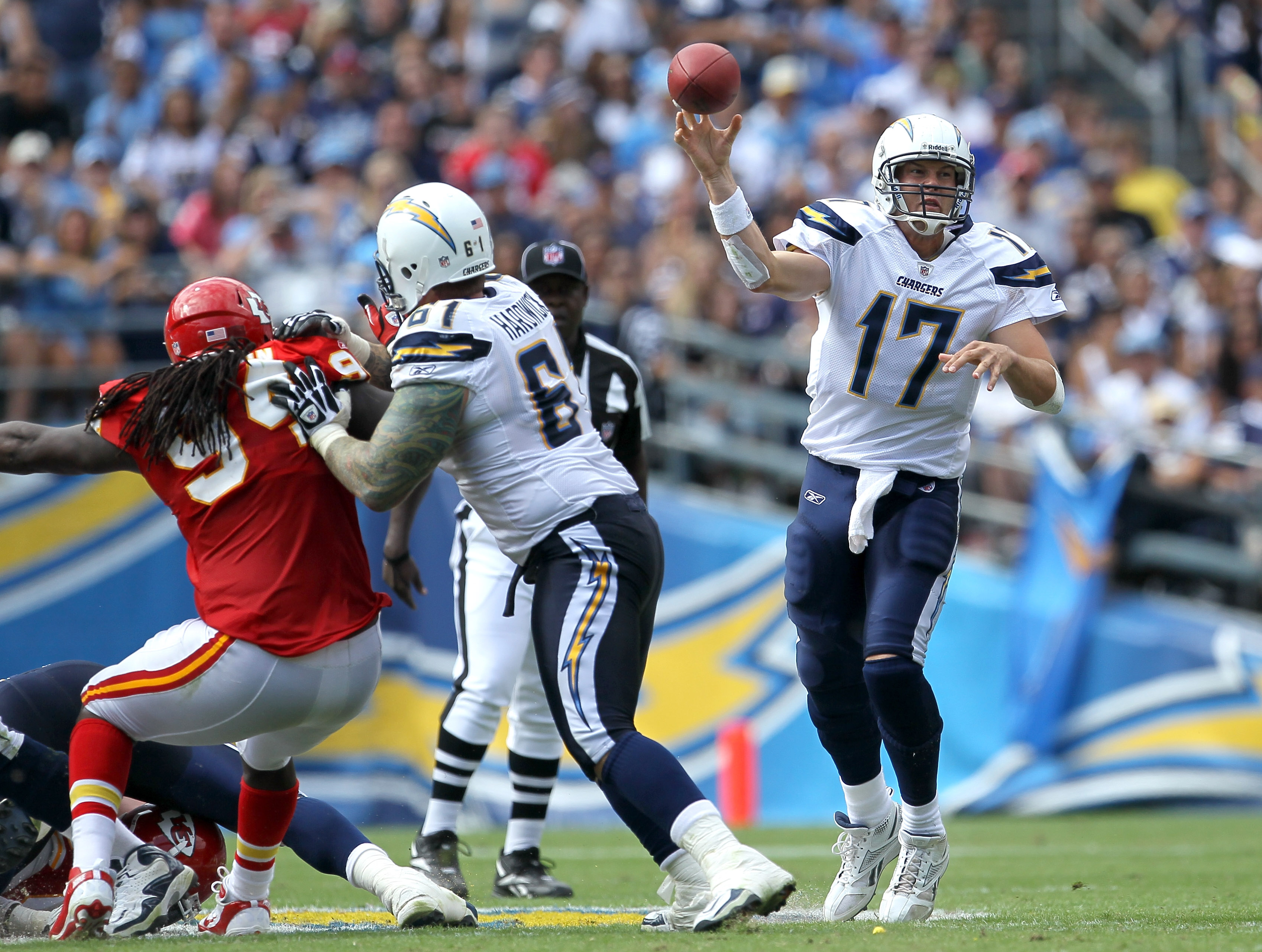
While I accepted the damage that came with playing football for a living as part of the price paid, something hit home and came to a head for me at Super Bowl LIII in Atlanta this past winter. I was there covering the weeklong event for my radio station, XTRA 1360, and despite being at the NFL’s glamor event, surrounded by the league’s football community, I found myself in one of those emotional troughs that occasionally came.
I knew then that I had a decision to make and some sort of action to take. While there was no erasing the time I had spent banging heads and colliding with defenders—and I wouldn’t take it back if I could any how, because it was the time of my life with so many lessons learned—it wasn’t enough just to plow through the low ebbs in life.
One of those lessons that football taught me came back to me, and suddenly seemed very handy: Do everything in your power today to ensure a positive outcome in the future. Those were words we learned and lived by each and every offseason, like the year the regular-season schedule came out and we found out the Chargers were in line to play the always tough Ravens, Colts and Patriots (who, damn it, had traded Richard Seymour to the Raiders, meaning we had to face him twice a year. But more on him later).
With teams and opposing players like that on our schedule, the workout intensity always picked up in the offseason. The classroom prep was diligent. Film study went to a whole new level, because you had to prepare for the great challenges ahead. Those were the lessons I needed to remember and act on now.
A Proactive Approach
At age 37, I didn’t want whatever neurologic decline had already occurred to continue without me becoming more proactive. We’ve all been privy to the information out there about the damage football can cause to the brains and bodies of the men who traded in their health for some sweet paychecks in return. There have been some notably ugly stories and outcomes for some ex-players. To me, those are the cautionary tales we have to take to heart. You can’t just sit by and let things take their course.
My friend and former Chargers teammate, Philip Rivers, used to call it the frog in hot water. You drop a frog in hot water and he immediately jumps out. But, if you put him in a pot of cool water and slowly turn the heat up, he will hang in there and keep cooking until it’s too late and he can’t get out. It’s the slow decline and complacency that catches up to you, and you have to be wary of it.
While on a phone call one night during Super Bowl week from Atlanta with Jayme, who was back in San Diego being super mom to our two boys, (Hudson, 7; Teddy, 5), we mutually decided my emotional highs and lows were unnatural, unwanted, and unacceptable. Something beyond the current healthy lifestyle routine we had established had to be done, and soon.
That’s when I remembered my conversations with my Navy SEAL pal, Pat, and immediately googled “Brain Treatment Center San Diego.” Two short weeks later, I walked in to a nondescript medical building in downtown San Diego and took a tour of the facility, which is operated by another former Navy SEAL who is passionate about helping Special Forces Operators restore the health of their brains.
The center features an ultra-comprehensive rehabilitative/restorative program for those elite ex-soldiers, whose brains have seen and dealt with far worse scenarios than my own. Their sessions include daily stand-up paddle boarding sessions, art therapy, and, of course, the actual treatment of magnetic brain stimulation itself.
The art therapy is what most interested and attracted me. Patients are taught a simple and repeatable method to paint that could be rapidly learned, allowing them to produce beautiful oils on canvas almost immediately. Very graphically, in their painting, you could see their brains and thought processes being restored to a healthier state. If they could go from the one extreme of dark, painful, and at times horrifying art to the other extreme of light and bright, I had to see what the treatment could do for me.
The Treatment
Two weeks went by and and I returned to the center on a Friday, finding myself sitting in a comfy Eames Lounge Chair with a cap on my head with about 30 holes in it, all filled with a transmitting gel, taking an EEG (electroencephalogram). This was the first step in the treatment. The test measures brain activity through brain waves, and in essence creates a map of where my brain’s health is currently.
The first week of treatment went by without me having the chance to sit down with the doctor, to hear him explain my brain’s baseline results and come up with a plan of attack. Naturally, your mind starts to wander into dark places during times of waiting to hear back about test results. Do I have early onset dementia or Alzheimer’s? Is it Parkinson’s or ALS? Is it nothing at all? It felt good to be getting treatment, but the unknown was not a great place to dwell.
Relief finally came with my first EEG analysis, and thankfully, none of my greatest fears were realized. My brain map showed abundantly high Theta wave activity, associated with a sleeping or meditative state—and I’m not a monk, so this wasn’t ideal—and low Alpha wave activity, which is where an active brain wants to be high. Ideally, I would have more Alpha waves and less Theta waves, along with more congruent wave transmission from the front to the back of the brain and from the left to the right hemisphere. As in all things, balance is key.
An interesting revelation is this: As you can see above, my right frontal lobe is where a significant portion of the damage was sustained. As a center, snapping with my right hand, and having a behemoth defensive lineman lined up three inches from my face, unable to get my hand up before contact, my right temple became my defacto hand.
For five days a week over six weeks, I went back and sat in that same chair, this time with an MeRT machine (Magnetic e-Resonance Therapy) on both the front and back of my head, sending magnetic stimulation into the targeted areas of my brain, at first to assemble neuronal activity, and then to mobilize it in the right pattern.
The treatment felt like really strong eSTIM, if you’re familiar with that pain management tool. If you’re not, it was more like a penetrating, shocking sensation. You don’t feel it on your skin, but it felt as if someone was to be able reach their thumb and index fingers inside my skull and pinch the brain.
I have to admit it was a little jarring at first. But I settled into the rhythm of the “pain” relatively quickly and eventually even started craving that sensation. Maybe because I knew it was the good kind of pain that led to necessary improvement.
The ritual was this: A countdown timer on the computer would give me three seconds warning. Boop. Boop. Booooop. At that time, I was instructed to close my eyes and discontinue talking, texting, Instagramming, or whatever I was doing and simply allow my brain to receive the stimulation. The actual impulses were only fired for five to eight seconds out of every minute, for roughly 35 minutes per session.
In between “shockings,’’ I got to know my clinicians, prepped for my radio show, or just took in the blue light (designed to help with regulating sleep patterns) that they would turn on for the morning treatments. About midway through each session, we would do a daily evaluation of where my level of stress, anxiety, pain, and happiness resided on that current day.
It was tiring, and I’ve got a “tell” when I’m tired. My right eyelid gets really heavy and droops. It happens after really intense workouts, when I’m sleep deprived, or in this case, when my brain got a really good squeezing. As it was described to me, this treatment is a workout for the brain. In fact, they keep an abundance of sugary snacks on hand to replenish the brain’s sugar levels following the treatment.
As athletes know, after a really intense anaerobic (explosive) workout, the body’s sugar reserves are depleted, and must be restored in order for rebuilding to take place. My eye would sag, and I’d get sleepy. Almost every day, I would go home and take a quick 20-30 minute nap, if possible, before I went to the radio station for my shift.

We did another EEG every two weeks to measure the change and progress that was being made in my brain. Within the first two weeks, during the neuronal assembly sessions, I noticed an increase in cognitive performance. It’s painfully easy to tell if I’m firing on all cylinders with my daily radio gig. Three hours of live interaction and conversation is a great barometer for checking in on the brain’s RAM (random access memory), and its processing speed.
After two more weeks of treatment, I began noticing some slight disconnects, as the brain was mobilizing these newly assembled neurons into the right pattern. Thankfully, another two weeks later and my brain was totally mobilized. While it was tedious to be at a doctor’s office every day for six weeks, and the cost isn’t cheap, I found it to be a very effective treatment.
The results showed there were improved physical changes in my brain activity following the treatment. My brain waves interacted in a notably more connected manner. The brain map shows more congruence from left to right and front to back, meaning it is more balanced.
The Future
I’m two or three months past my last treatment, and I can honestly say my brain is in a better place than it was before. The emotional highs and lows I was living with have been stabilized. My cognition took off during that period and it hasn’t slowed down since. Overall, I’d definitely recommend the treatment to other former football players.
Eventually it would be nice if the NFL could figure out a way to have this, and other treatments associated with the brain, as part of the “checking out” phase of a player’s career. Sure, there is the league’s Brain and Body Assessment program, of which I also took part. Measuring and knowing where you stand is great. But doing something to improve your position is even more critical.
Taking charge of your situation, whatever it may be, is powerful and empowering in itself. Knowing that I didn’t quit, and will never stop seeking tools to help me repair and grow had its own positive benefits. That’s a version of the placebo effect. I’ve heard lots of research scientists say the placebo effect is roughly 30% effective in everything. I’m not labeling this a placebo treatment by any means. But I do know, when you fully commit yourself to a process, and completely believe in it and give up doubt, the outcomes of any treatment or plan has a far greater likelihood of achieving the desired outcome.
So yes, some damage to my brain was sustained. Some of it, like the arthritis in my joints and back and neck that I wake up with every day aren’t going to just miraculously vanish. But, as they say with arthritis, the minute you stop moving, the worse it gets.
I’m not sure if a former NFL player has ever lived to be 100, but that’s my goal. I may not get there of course. But every season you don’t set out to go 9-7 or to just make the playoffs. Hell no! You set out to win the Super Bowl. Every year. Living to 100 is my new Super Bowl.
And it starts with ….. Do everything in your power today to ensure a positive outcome in the future.
Here’s to your health.
10 Things I Think I Think
1. I think I’m not as good today as I will be tomorrow. That’s a philosophy that came to me after Philip Rivers and I flubbed a snap on Halloween in Kansas City on Monday Night Football in 2010 that ended up costing us the game. We both struggled to comprehend what happened and to piece it all together in the aftermath. Yet we had to face our teammates and own up to being the goats (not the G.O.A.T.), and get ready to play again in the following weeks.
2. I think people need to meet Philip Rivers. While I’m fairly sure the negative perceptions about Phil and his strong personality have lessened over the years, it bears saying here: If you ever met Rivers, you’d immediately fall in love with him as a human. One word describes him perfectly: pure. He’s pure of thought, pure of action, and pure in his passion. Go back through his 15-year NFL tenure and I can guarantee you will not find a single teammate who has spoken poorly of him.
3. I think this when asked: What do I miss about being an NFL player? Everyone always says, “I miss the locker room.” I don’t miss the locker room. I miss the meeting room. I miss the urgency with which the football world moves. One game of pro football equals 10 games of Major League Baseball, and five games of both the NBA and NHL. Go on a 10-game losing streak in the NHL, and someone is getting fired. But a two-game losing streak in the NFL is a bad start to the season for the Patriots.
Corporate America, of which I’m now loosely a part, has no idea what urgency, hustle, and timeliness look like. As my old college defensive coordinator, Brock Spack used to say, “Assess and elbows, men. Asses and elbows.” He wanted to see us digging trenches with some urgency. That’s the norm in football.
4. I think this when it comes to the Patriots: As a player and opponent, I used to despise them, mostly because we were only able to beat them two times in my career, and only once with Tom Brady at quarterback. The other time was with Matt Cassel (in 2008). Do we even count that one? But now, I find myself cheering for them.
For one thing, Brady has done a great job of allowing us access to him as a human. It’s easy to hate the machine. It’s hard to sustain hatred towards a human. I can’t believe I’m saying this publicly, but I devour any information I can get on the guy. He’s beyond impressive. And hell, so are the Patriots. There I said it. They are something to marvel at, learn from, and cheer on. Unless they’re playing my Chargers.
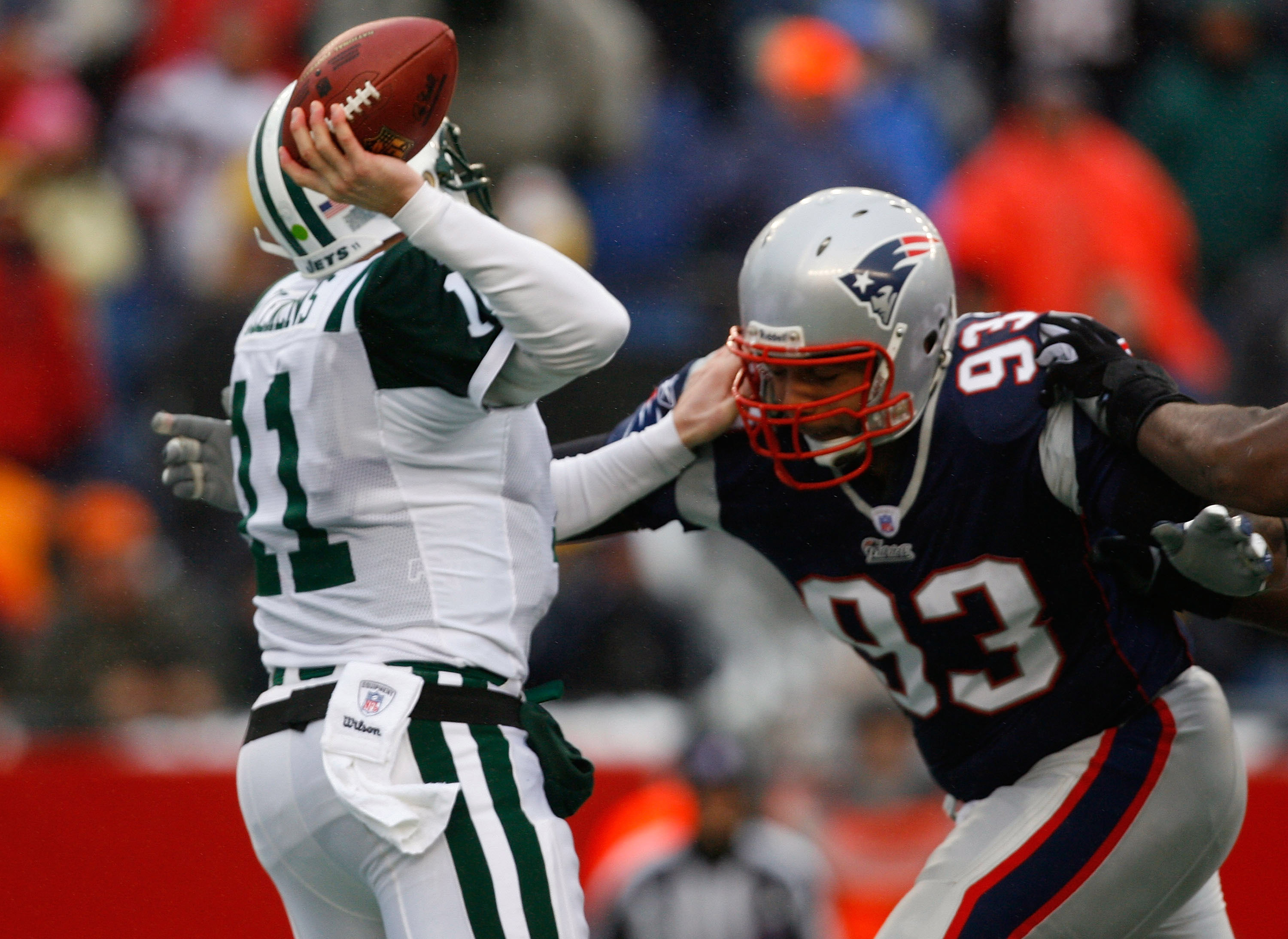
5. I think it’s worth noting one more thing about the Patriots: Ex-Patriots defensive lineman Richard Seymour most likely won’t make the Pro Football Hall of Fame, because his numbers aren’t outrageously good. But I bet if you polled offensive linemen during his time in the league, there would be a high percentage of centers, left guards, and left tackles who would say, “There wasn’t a smarter, tougher, more physically imposing presence in the league than Richard Seymour.” He was in fact the only player I publicly talked trash to, after we lost to them in the AFC Championship game in 2007. I was immature and he played the game with his trademark instigating, stir-it-up style. Sorry Richard. Hope you’re well.
6. I think parents are crazy. And we do it to ourselves. Yes, sports are important for all of the reasons we all know. But the idea that traveling all over the state when your kid is only eight to 10 years old, because that’s going to get them into college and help them land a professional contract, is absolutely ludicrous.
You’re far more likely to burn your child out on the sport they may have been passionate about than helping them start a career. Don’t put your own failures and ineptness as an athlete on your expectations and hopes for your child. If it’s meant to be, it will be. (I think I stole that line from Doris Day).
True story: I didn’t play football in high school. I was a high school wrestler who walked on to the Purdue football team my fourth semester. My left guard with the Chargers for many years, Kris Dielman, was a defensive lineman when he first showed at training camp. He got cut his rookie year and then was brought back as an offensive lineman a couple of weeks later. He wound up making four Pro Bowls and would’ve been a Hall of Famer if he didn’t have his career cut short by concussions. Go back and watch his tape if you want to see what my coaches would call “a blind dog in a meat market.” His was an impressive tenacity.
Antonio Gates is going to be a Hall of Famer some day. But he didn’t play college football. The point being, if your child is good enough to make it at the college level or in any professional league, they will be found. Players are being drafted in the NFL now out of Canada. If they can find you in Canada, you can be found anywhere. My wife is Canadian, so I feel at liberty to take a jab. And Canadians are some of the nicest people on the planet.
7. I think this on the topic of regrets about playing football: I have absolutely ZERO regrets about my time spent playing one of the most violent positions in all of sports. ZERO. First off, my health is in pretty good shape. Secondly, it was the absolute time of my life. Not many people get the thrill of running out of the tunnel with their name and number being blasted over the PA system, to the reception of cheers or boos of 70,000 friends, family members, and foes. Very few will understand what it’s like to look in a teammates’ eyes and without words they KNOW I will do anything to protect him, and he’d do the same.
8. I think with football it’s a net positive by a wide margin. When the worth of football is being evaluated by skeptical parents and politicians, what gets lost in the conversation on the game’s health and safety issues comes down to a really simple question: Did it add more to your life or take away more? Without a doubt, it added more to my life. Financially it took me from the very middle class in Indiana to having my children in private school, living in paradise in San Diego, with a home, a wife, and a life that I probably don’t deserve.
More importantly, it shaped me as a man. The urgency I spoke of earlier also pertains to the timeline with which life’s lessons were learned in the game. I’d always say at the end of the season every coach on our staff looked like they aged five years in about six months. But from a maturity standpoint, with the necessary learning of how to handle both success and defeat, football players can leave the game at age 30, with the wisdom of a much older man.
9. I think this is my answer to the question: Would you let your kids play? I would, 100 percent. Admittedly, immediately out of the league, I would’ve given a different answer than now. But the dust has settled after my retirement due to injury. As a former NFL player, if you allow it, the fear-mongering and incessant news cycle will absolutely swallow you alive. You can be consumed with negative thought patterns and get caught in the vortex of loathing, self doubt and regret.
While the negative press about the dangers of the sport has died down over the past couple of years thanks to the necessary rule changes the NFL implemented, our awareness is still heightened. The reality is players today do a better job of taking care of themselves and each other, while still maintaining the essence of a brutal sport.
As is the case with all youth sports and activities in general, the interest needs to come from the child. FOOTBALL IS NOT FOR EVERYONE. It takes a certain type of human to enjoy throwing their body around and fighting for three hours at a time. But I assure you, such humans do exist, and it’s not because our Dads “made us do it.” I watch my sons in our trampoline, which serves as a defacto UFC ring. They look like Dominick Cruz and Urijah Faber. Moreover, they look like lion cubs getting after it. Being physical is part of their makeup.
If they ask to play football, without hesitation I would say yes.
10. I think my final point about football is this: Don’t try to change things that aren’t yours. If football isn’t your thing, like really YOUR THING, you have no business trying to change it or eliminate it. There’s no amount of reason that will help you understand why we continue to play the game amongst the mountain of evidence that informs us of the perils of the sport.
We know it’s dangerous. We know there are potentially bad outcomes. That’s part of what makes it fun in the first place. We know there are only a small slice of folks who could survive the chaos we enjoy so much. We want to test our physical and mental endurance. We want to prove who is the alpha male. We want to establish dominance and break an opponent’s will. You may not understand that. You might even think it’s absurd.
But people still ride motorcycles, jump out of planes, climb mountains, box, fight, swim with sharks, fly small planes, run 100-mile races (while impressive, not healthy), surf 100-foot waves, and any other activity you want to mention that also has mountains of evidence to steer participants away from them. In reality, it’s because there’s no money associated with them or no platform to gain attention from in explaining why nobody is leading campaigns against those dangerous activities.
Football gives football players what they want out of their life experience. Further, for even a more select few, it gives them what they NEED in life.
If it isn’t yours in the first place, it’s not for you to understand, change, or eliminate. Just accept it and move along people.
One More Thing
Former Chargers quarterbacks coach John Ramsdell gave us a great bit of advice that really pertains to everything: “If your happiness depends on if you ever win the Super Bowl, you’re setting yourself up to be miserable.”
It’s a perfect confluence of events that leads to a Super Bowl championship team. With its single-elimination playoff system, football, more than any other professional sport, has a large element of good fortune involved. The best team more often than not wins a seven-game series. But in football, with an oblong ball that doesn’t bounce predictably, in a game played, at times in the elements, by 11 emotional characters, and judged by humans; the opportunity for upsets and surprise outcomes is high.
Don’t get me wrong. Having a Super Bowl experience would’ve been amazing, I’m sure of that. But in no way would I be a better or happier person today than I am had I won a Super Bowl ring (or even six). Living like a champion doesn’t require being a champion. Find your purpose. Pursue it like a champion. Then you’ll find your happiness.
